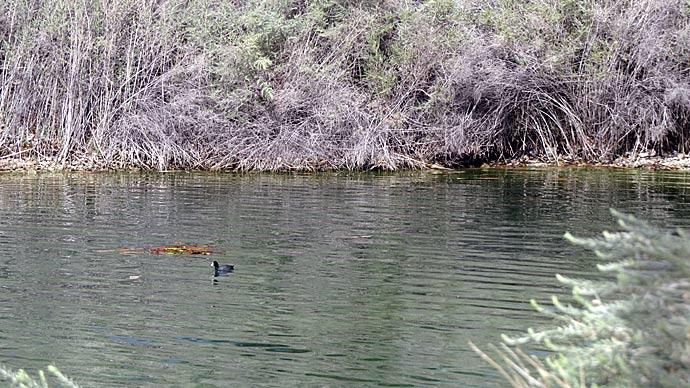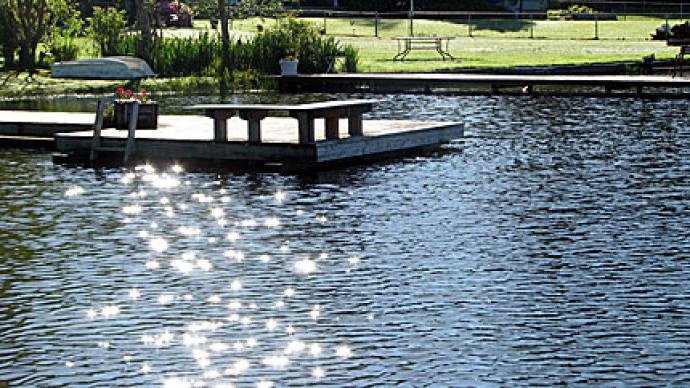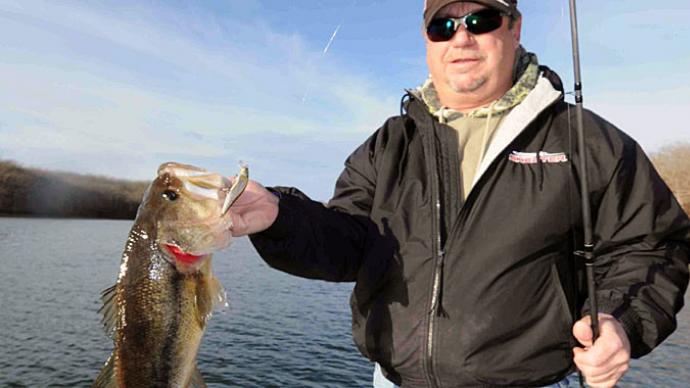
As anglers, we are constantly focusing on the productivity and success found on our local body of water. To determine the quality of a lake, river, or reservoir, anglers typically consider many different factors including the type of forage, cover, structure, the type and amount of vegetation, and the water color and temperature. These well-known variables can affect fishing success as well as bass survival and growth. It is customary for us to view a bass fishery in this type of way. Whenever a problem is encountered in a fishery, however, anglers and even fisheries biologists will look at the lake itself to attempt to determine what went wrong. Why are there fewer bass in the lake? Why was there a sudden and unexpected fish kill? Where did this sudden growth of nuisance aquatic vegetation come from? Sometimes the problem does not come from within the lake itself but originates outside of the lake. Under these circumstances, we must sometimes think outside of the box.
A body of water is heavily influenced by the activities that occur within its watershed. A watershed is most simply defined as any sloping land surface that sheds water. A more practical way to view a watershed is as a drainage basin that discharges surface flows into a body of water. Simply, the land that surrounds a lake or reservoir can heavily influence the water-based resources (including bass) within a lake or reservoir. The water that flows over land within the watershed fills these water bodies but in doing so transports many other potentially harmful things with it. Obvious harmful pollutants such as various toxic chemicals, oils, and trash are washed into the lake, but less obvious pollutants such as sediment, phosphorus, and nitrogen enter into the lake as well. These pollutants can cause a cascade of effects that can reduce water quality, habitat, and eventually bass populations.
Sediment is the number one pollutant in the waters of the U.S. but is not typically considered as a pollutant by anglers or the public. Every time it rains and we witness the water turn from a beautiful blue-green to muddy brown, we observe the effects of sediment. Sediment enters a water body from erosion within the watershed, and the amount of eroded sediment is directly related to land use activities within a watershed. Land use practices such as agriculture, deforestation, and urbanization have the potential to drastically increase the transport of sediment into a water body because bare soil is exposed. As a result, sedimentation or the process of filling in a lake or reservoir, increases. Shallow water becomes shallower; creek channels fill in; water quality declines; storage capacity of reservoirs is reduced; and fish habitat disappears. For example, gravel-spawning habitat for smallmouth bass is covered with layers of sediment, especially at lower ends of reservoirs that have reduced flow and current, which reduces the reproductive potential of smallmouth bass.
Along with sediment, nitrogen and phosphorus enter the water. At first, this may not seem so bad, but, as is the case with most things, too much can be very harmful. Phosphorus is the nutrient that most limits primary production in water. In other words, adding phosphorus will increase plankton and algal blooms and stimulate plant growth. Eventually, the result is increased nutrients, forage, and habitat for bass, which can then result in more and bigger bass. This sounds great at first, but the continued addition of phosphorus over the years, referred to as eutrophication, can increase plant and algal blooms to the point at which it is detrimental to the bass population. First, a large growth of aquatic vegetation in a reservoir or lake can impede navigation and access to productive fishing spots. Secondly, a high density of aquatic plants can provide too many hiding places for forage, making it very difficult for bass to feed efficiently. Lastly, plants undergo photosynthesis to produce oxygen in the water, but, after the sun has set, plants continue to respire, using up oxygen. When plants are too numerous, respiration can consume all of the available oxygen in the water and result in massive fish kills. This can happen unexpectedly, especially after consecutive cloudy days in warmer waters that hold less oxygen.
So as anglers, what can be done to improve our bass fisheries when considering the entire watershed of a water body? First, we need to change our mindset and consciously consider that what happens in its watershed will eventually impact the fishery in our local lake, reservoir, or stream. We need to address land use activities that may add pollutants to the water and increase sedimentation or nutrient loading. Many land use practices can be adapted using what are referred to as Best Management Practices (BMPs) to reduce the overall detrimental effect within the watershed. For example, agriculture can use cover crops to reduce the exposure of soil or provide watering tanks for cattle, rather than allow cattle to wade in streams and along stream banks. One of the most effective tools is maintaining stable riparian zones around lakes, streams, and rivers. Riparian zones are the areas directly adjacent to a body of water, and it is recommended that the plant communities (i.e. grasses, shrubs, and trees) within these areas be left undisturbed. These areas are very important and provide many services such as stabilizing banks, slowing water flows during floods, filtering out sediment, and providing plants to take up nutrients like phosphorus.
Specifically, what can an angler do at his local fishery? First, be a responsible landowner if you own land adjacent to the water. Maintain a riparian buffer between your land and the water by allowing plants to grow tall near the waters edge. Provide landscape around houses, driveways, and other conduits that leads to the lake in order to slow flows and capture pollutants. Resist the urge to fertilize your yard, especially if rain is expected because the chemicals in the fertilizer will only run into the lake. Secondly, evaluate how you may be contributing to detrimental land use practices in the watershed that you live in. Local extension agents and natural resource agencies are a great resource for information. Believe it or not, the government actually has incentive programs for landowners who are willing to implement BMPs. Lastly, participate in conservation projects to restore important areas within a watershed such as riparian zones and help to educate young people as to the importance of their actions in the watershed and the effect on a fishery.
As bass anglers, we are observers and participants in nature. If we take the time to look outside of the box, beyond the waters that we fish, we can begin to understand some of the potential threats to our fisheries. Bass populations react and change not only to the conditions within the water body, itself, but to changes in the watershed as well. The truth is that we all live downstream, and, therefore, inherit the problems of the lakes, rivers, and watersheds upstream. Bass anglers can set the example and raise awareness to others about the potential threats to our fisheries and to the quality of our water by understanding how a healthy watershed can contribute to a healthy fishery.
Johnathan Davis is a research biologist at Tennessee Technological University and holds a B.S. and M.S. in fisheries science.
Reprinted with permission from Pond Boss Magazine



